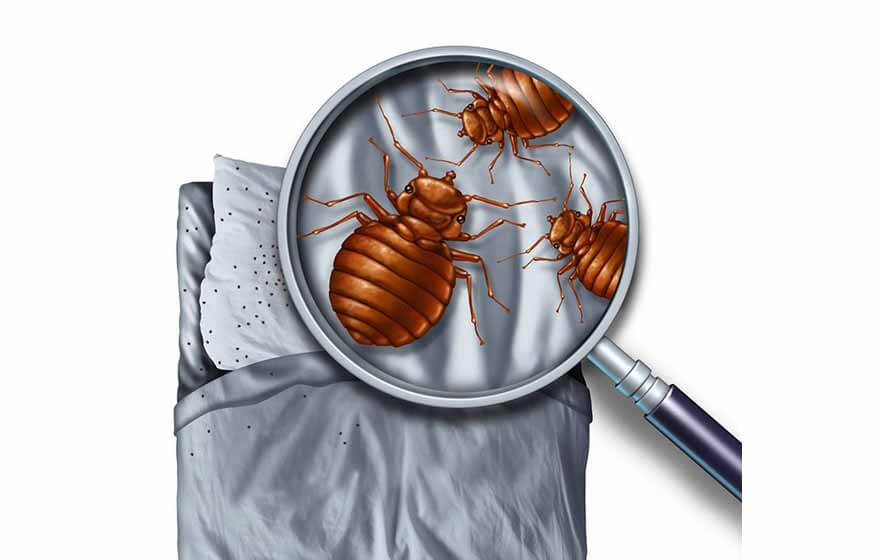Bed Bugs
Latin: Cimex lectularius
Common Locations:
Beds(between mattresses), seams in bed linens, upholstery, behind wood trim, inside electrical boxes, in floors, behind wallpaper
What Are Bed Bugs?
The bed bug has a famous history as a bloodsucker and is named due to its tendency to feed on a bed’s occupants at night. The bed bug primarily bites humans but can feed on any warm blooded animals such as birds, mice, and pets. The bed bug is found worldwide and probably came to the US from Europe in the 17th century.
Female bed bugs can lay over 500 eggs over a lifetime and each bed bug will molt or shed its shell five times as it grows and a blood meal is required for each molt. If blood meals become scarce, bed bugs can slow their life process until a blood meal source is found. The saliva of the bed bug may cause a swelling on most people when they are bitten but they do not leave a wound. Swelling may include redness in some sensitive people.
Bed Bugs can multiply quickly and over the course of a few months it can turn into a full infestation of over 13,000.

How can I identify Bed Bugs?
Adults are just under a 1/4″ long and are relatively flat, nearly as wide as long, and oval in shape compared to most other insects. The color is brown to reddish brown. They tend to move slowly and measure from 4mm to 5mm. The body may have short golden hairs and will exude a “sickening sweet” smell from glands on its body. There are many types of bed bugs and related insects.
Commonly, the first sign of bed bug infestation is the appearance of small brownish or reddish dots on bed linens. These are fecal spots or droppings on the surface of linens from these bugs. Occupants may also notice swelling where they have been bitten.
How do I know if I have Bed Bugs?
Firstly, it is important to know their habits. Unlike a cockroach, the bed bug is able to crawl into very small crevices in and around the human environment near their food source. THey are attracted to the Carbon Dioxide emitted by breathing. These locations commonly include between mattresses, seams in bed linens, upholstery, behind wood trim, inside electrical boxes, in floors, behind wallpaper, and in any other area near a blood meal that will hide a very thin insect.
Note, however, that bed bugs will move distances at night for a blood meal which is why infestations occur in beds commonly, so merely washing bed linens or other infested areas might not eliminate the source. Bed bugs are also excellent at relocating by hitching rides in luggage, boxes, shoes, and any other mobile material.
Secondly, an infestation of bed bugs is NOT evidence of unclean or unsanitary living areas. World class hotels have reported bed bug infestation in recent years perhaps due to the increased domestic and international mobility of society in the past few decades.
How can I get rid of Bed Bugs?
Commonly home remedies and over-the-counter prove to be ineffective. It is important to call for an inspection if you think you have bed bugs.
The first step of control is to have a professional thoroughly inspect the area. This inspection is required to determine the places where the bed bugs are living. Once the inspection is complete, the pest control professional will determine the proper type of control technique, then treat the area and most likely return for a follow up inspection.




